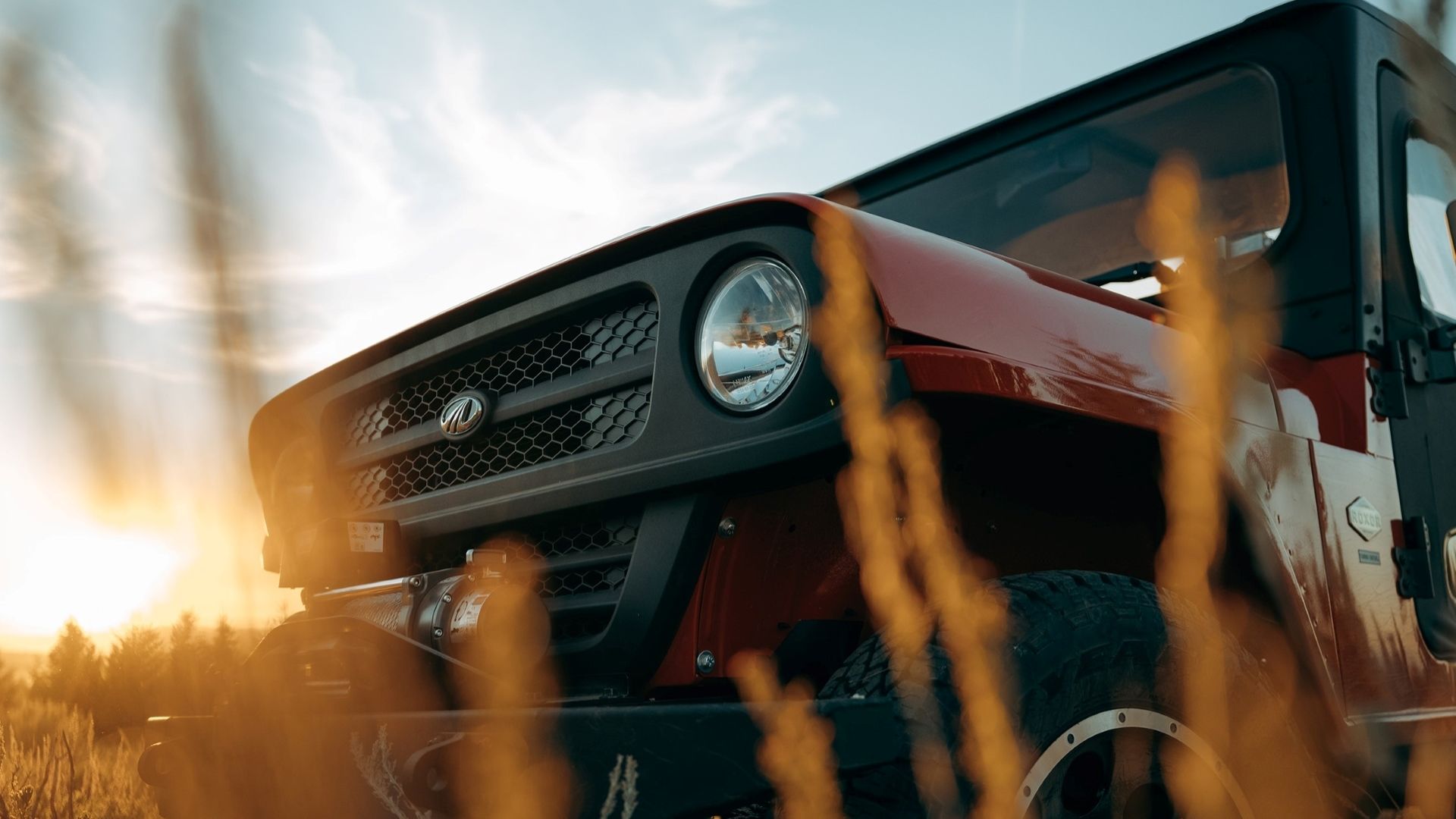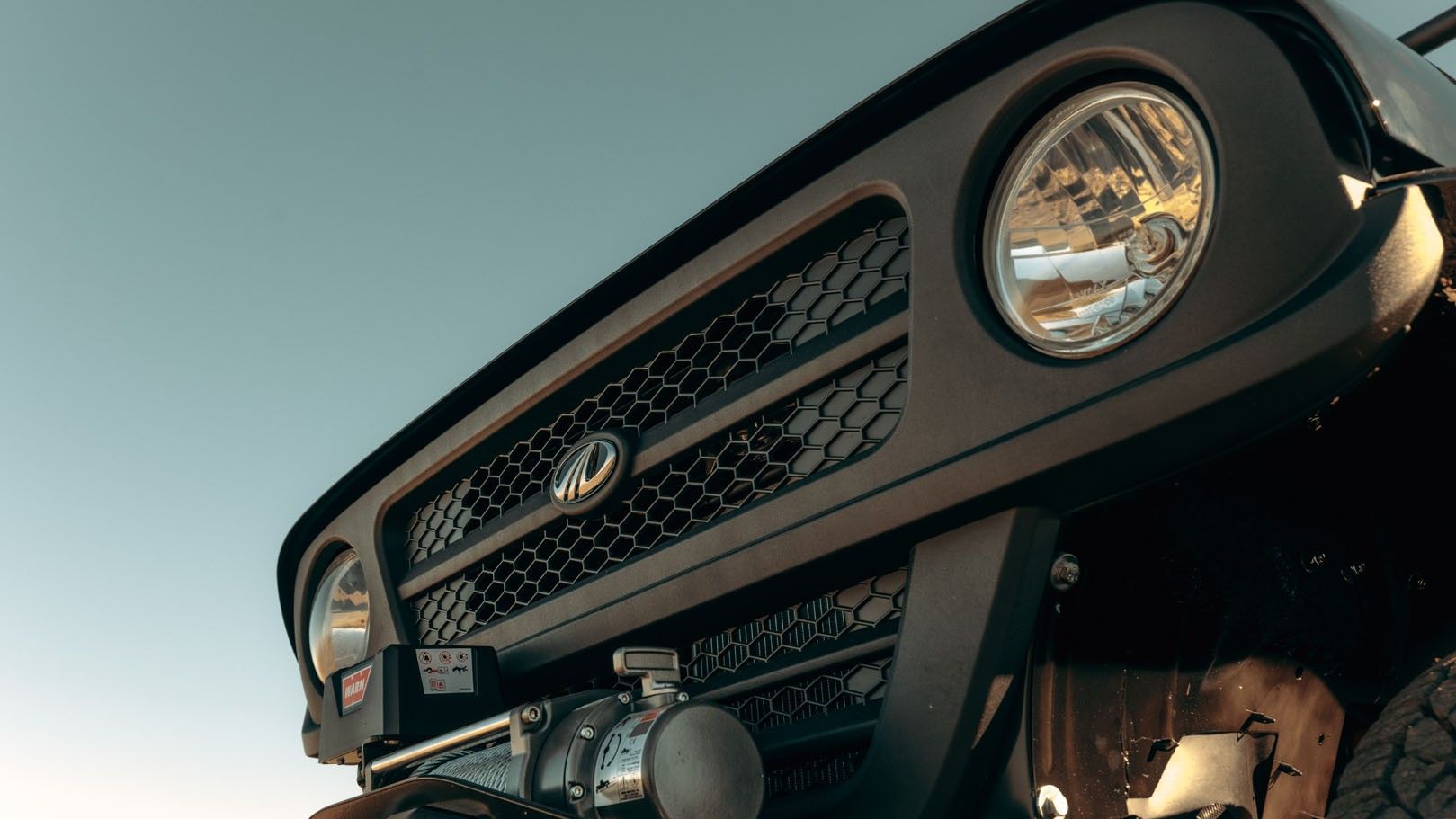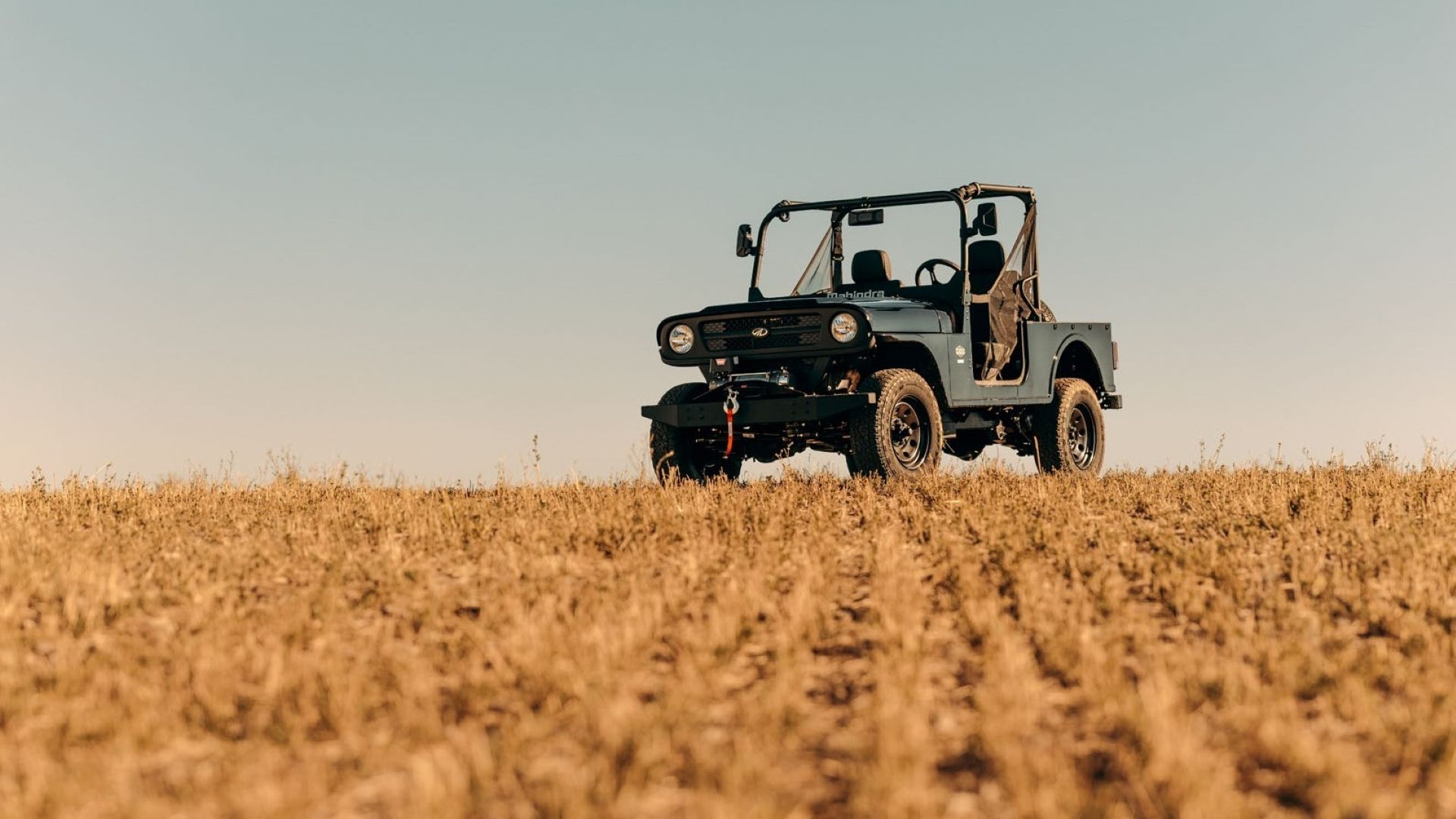10 Reasons You Should Pick A Mahindra Roxor Over A Polaris Ranger
[ad_1]
Mahindra has finally earned permission to sell the Roxor in the United States. The Roxor excited utility terrain vehicle fans when it debuted in 2018, primarily because it looked like an American icon – the Jeep CJ. Intriguingly, the vehicle’s main attraction, its looks, landed Mahindra in legal trouble as Jeep protested the vehicle’s sale in the United States. Courts delayed the Roxor’s sale for years until they were satisfied that the car no longer resembled the CJ.
The $20,000 Roxor is coming up against several established UTVs, including the Polaris Ranger. The Ranger has been around for several years, so few would expect a newcomer like the Roxor to be better. However, Mahindra has produced a very impressive vehicle as it looks to claim a piece of the UTV market. Here are 10 reasons you should pick a Mahindra Roxor over a Polaris Ranger.
10 The Mahindra Roxor Has a Higher Towing Capacity
The Mahindra Roxor is a mechanized workhorse. It can tow up to 3,490 pounds, an impressive stat for a UTV. The Roxor, with its class-leading tow rating, is therefore perfect for farm and ranch work. Attaching the maximum tow weight to the rear of the Roxor reduces top speed to a gingerly 15 MPH. The Roxor’s all-weather model also comes with an 8,000-pound Warn winch, which has a higher pulling capacity than the winches offered by Polaris.
The most a Polaris Ranger can tow is 2,500 pounds. That towing capacity is reserved for the XP 1000 and its variants and the Ranger 1000. The Ranger’s entry model, the 570, has a maximum towing capacity of 1,500 pounds, less than half the towing capability of the base Mahindra Roxor.
9 The Roxor’s Jeep-Like Looks
Mahindra’s ties with Jeep ran as far back as the mid-20th century when Willys granted the Indian manufacturer permission to build the Jeep CJ3B. The Roxor wasn’t the first car Mahindra built that looked like a Jeep, but it was the first Jeep clone Mahindra attempted to sell in the United States. Wary that the Roxor would eat into the Wrangler’s sales, Jeep successfully sued Mahindra for infringing on Jeep’s design, forcing Mahindra back to the drawing board.
Mahindra remodeled the front fascia, ditching the Jeep-like grille for a broader, rectangular, two-slat grille. The redesign increased the distance between the grille and the bumper, exposing the tires and suspension. Still, Jeep wasn’t happy. It sued again, asking the court to block Roxor sales in the United States. However, Jeep’s suit failed – the court opined that the Roxor’s new look no longer infringed on Jeep’s design.
Despite the court’s findings, it’s impossible to ignore Jeep’s influence on the Mahindra. The vehicle’s retro 1940s Jeep styling arguably looks better than the modern design of the Polaris Ranger. Further, all Roxors are painted by hand, and like the original Willys, the vehicle’s spot welds are discernable through the paint.
8 The Roxor’s Higher Fuel Capacity
When filled to the brim, the Mahindra Roxor’s fuel tank can hold 45.4 liters (12 gal.) of diesel, about 0.9 liters more than the Ranger’s smaller fuel tank. 0.9 liters (0.2 gal) might seem insignificant, but it might be the difference between making it home or calling for help when your vehicle runs out. The Roxor has another ace up its sleeve – you can increase its fuel capacity by installing external fuel tanks in the cargo area.
Further, the Roxor uses fuel more efficiently than the Ranger. Mahindra estimates that the Roxor should average 32 to 34 MPG and cover over 350 miles on a single tank. The Polaris, on the other hand, averages around 28 to 30 MPG. With the Roxor’s larger fuel capacity and better fuel efficiency, you can go further than you would in a Polaris Ranger.
7 The Mahindra Is Less Complicated
Inside the Mahindra, you don’t get much beyond what the occupants of the WWII-conquering Willys got. Besides two cupholders and a power port, there’s next to nothing in terms of luxury – and no speedometer. The barebones design allows the driver to focus on the important business of driving.
Conversely, the Polaris has a modern interior. Depending on the model, the Polaris features a digital information center, a navigation system, innumerable cupholders, and plenty of internal space. Compared to the Mahindra, there’s plenty inside the Polaris to distract a driver. Further, given the many Ranger models, customers may find it challenging to choose one that suits them. There are nine Ranger variants currently on offer, compared to the Roxor’s two models.
The Mahindra Roxor is probably the most customizable UTV in the market. Given the wide range of optional accessories, customers can order a Roxor that suits their specific needs. Mahindra allows buyers to choose from several standard color options. Other optional extras include:
- Internal defroster.
- Rollbar grab-handles.
- Roxor-branded lids.
- Aluminum wheels.
- Under-body skid plates.
- A 40-inch light bar.
- Upgraded tires.
Perhaps the most insane Roxor extras are tank-like tracks: For about $20,000, Mahindra can fit tank-esque tracks on your Mahindra Roxor. The Polaris Ranger also has optional extras, but they aren’t as extensive (or as bonkers) as the accessories available with the Roxor. Granted, some Roxor addons are freakishly expensive. Their cost notwithstanding, they offer you an opportunity to build a completely unique Mahindra UTV.
5 The Roxor’s Standard Manual Transmission
The Roxor’s diesel engine routes power to all wheels through a standard five-speed manual transmission. The transmission suits drivers using the Roxor as a trail-conquering UTV – it facilitates a more engaging driver experience. The Roxor’s three pedals and stick shift add a sporty, fun feel to the retro-styled UTV. A traditional manual like the one in the Roxor is rare among UTVs, setting the Roxor apart from its competitors.
Polaris Rangers use automatic transmissions, which are less engaging than the manual in the Roxor. For drivers only looking to exploit the utilitarian aspects of the Roxor, Mahindra offers an optional six-speed transmission.
4 The Roxor Has a Longer Free Warranty
The Mahindra Roxer’s warranty is two times longer than the Polaris Ranger’s warranty. The Roxor’s two-year warranty is voided by racing or competitive vehicle use, aftermarket modifications, using the car for an unintended purpose, and tampering with the speed limiter. Further, the Roxor’s warranty ends once the vehicle’s odometer clicks past 12,000 miles, whether or not the two-year period has expired.
Mileage has no impact on the Polaris Ranger’s one-year warranty. You can drive as far as you want for one year without voiding the warranty. Polaris Ranger customers can extend the vehicle’s warranty for a maximum of five years by purchasing the Polaris Protection Plan.
3 Mahindra’s Outstanding Reliability
The proof of Mahindra’s reliability is its popularity in India, where it easily handles the country’s rough terrain. Mahindras are popular in India’s villages, Tier-II, and Tier-III cities, which feature underdeveloped roads. Mahindras like the Bolero are reliable because they eschew high-end electronics, have tough bodies, and feature bulletproof engines.
Mahindra followed the Bolero blueprint when designing the Roxor – it lacks complicated electronics, has a tough exterior, and has a reliable diesel engine. Considering Mahindra’s reliability track record, the Roxor should run for thousands of miles without complaint. Additionally, the vehicle shares mechanical aspects with the Willys CJ, which was built tough to handle the demands of rural terrain. The Polaris Ranger can’t beat the simple and rugged Roxor in terms of reliability.
2 The Roxor’s Tough Steel Construction
The Roxor, with its extensive steel construction, is perhaps the toughest UTV in the market. Unlike other UTVs like the Polaris Ranger, which feature molded plastic exterior panels, the Roxor is made almost entirely of steel. It’s basically a metal box with seats, headlights, an engine, and wheels. The Roxor’s frame can handle extensive abuse, making it the perfect UTV for off-roading and strenuous work.
An unwelcome consequence of the Roxor’s construction is weight – the base model weighs 2,990 pounds, and the all-weather model, with its windshield and extra body panels, weighs 3,330 pounds. In comparison, the heaviest Ranger weighs just shy of 2,000 pounds. The extra weight may affect maneuverability and speed, but that’s beside the point – the Roxor’s tough exterior facilitates the vehicle’s primary use as a workhorse.
1 The Mahindra Roxor’s Engine Delivers More Torque
The Roxor’s 2.5-liter turbocharged diesel engine delivers an underwhelming 62 horsepower. The 1.0-liter engine in the XP 1000 Ranger produces 20 more horsepower than the Roxor engine. However, the Roxor’s engine dominates the torque metric, producing 144 pound-feet compared to the Ranger’s 62 pound-feet. It produces more torque than the Ranger XP Kinetic, the brand’s all-electric variant, which churns out 140 pound-feet.
The Roxor’s impressive torque facilitates towing and offroading – minimal throttle inputs deliver low-end torque to the tires allowing drivers to focus on the trail. Additionally, the engine’s delivery of low-end torque allows the driver to run the engine at low revs, reducing engine temperatures and slowing down wear.
[ad_2]
Source link









